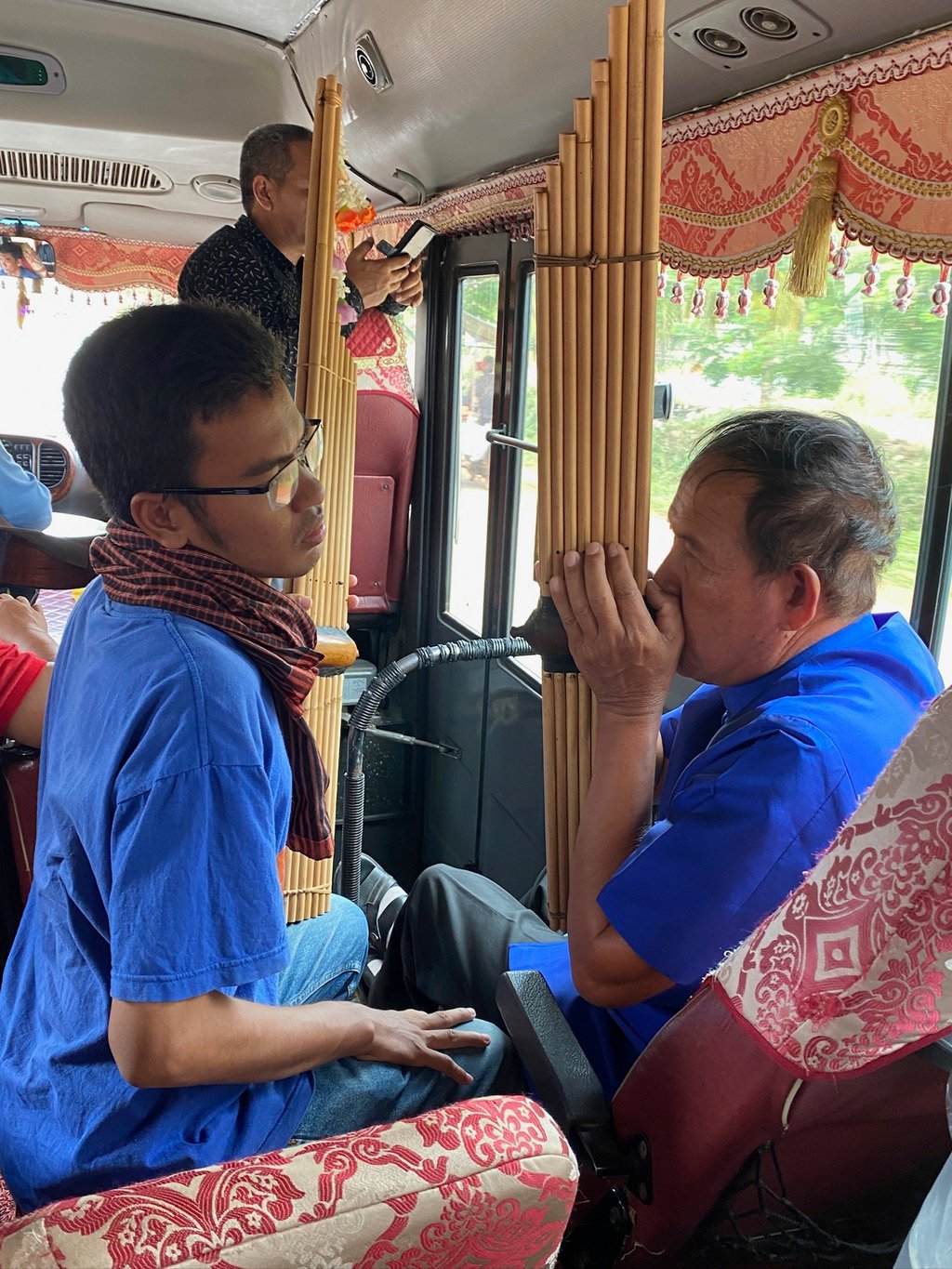How masters of traditional Cambodian instruments are helping heal a land still recovering from the horrors of genocide
- The Khmer Magic Music Bus takes traditional Cambodian instruments and songs across the country, hoping to reconnect locals with their national identity

On a bus rumbling along a road in southern Cambodia, past rice fields and stands of coconut palms, 30-year-old musical protégé Nou Samnang stares intently at the fingers of the master, Mon Hai, fluttering over the tiny holes in the upright bamboo pipes.
Nou Samnang is seated inches from the dignified, dexterous 67-year-old Mon Hai, trying to match the sounds to the finger placements just above the wooden mouthpiece, producing sounds somewhere between a harmonica and an accordion.
Songs played on the ancient instrument – a mouth organ called a khen – have been handed down, not by sheet music, but by the senses, and the ever-changing succession of notes is confusing to Nou Samnang as he tries to memorise the pattern while tapping his thigh to the melody.
The lesson is taking place on the Khmer Magic Music Bus, a troubadour transport created 10 years ago to bring traditional Cambodian instruments and music to villages and schools throughout the country.

This trip, the sixth after the project was sidelined by Covid-19 from early 2020 until late 2022, will travel from the capital, Phnom Penh, five hours into the countryside to a school that teaches English and vocational trades to village youth for free.
The 20-seat Hyundai bus is filled with six musicians, two singers and several relatives, and all their traditional instruments, including the kim, a dulcimer played with bamboo sticks, and the chapei, a long-necked, two-string lute.